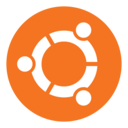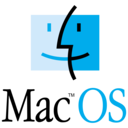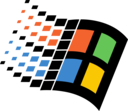Best Operating Systems for Privacy Curated by GitHub Users
Open Source and Always a Work in Progress (WIP)
Open Source and Always a Work in Progress (WIP)
This technical assessment ranks desktop operating systems according to architectural privacy rather than usability or popularity. The evaluation concentrates on code transparency, the degree of independent scrutiny the platform receives, telemetry behavior, the structure of the network privacy model, the system’s approach to isolation and compartmentalization, and the ways in which metadata is exposed. It also considers which privacy properties can be verified. The list distinguishes between privacy, security, anonymity, and auditability, since different operating systems are designed to address different threat models rather than a single uniform goal.
Our evaluation considers:
1. Code Transparency: Kernel and userland availability for inspection.
2. Independent Audit / Scrutiny: Formal audits or long-term peer review.
3. Privacy Architecture: Isolation, Tor routing, minimal surface, or amnesic design.
4. Default Telemetry (out-of-box): What is sent "home" without additional configuration.
5. Metadata Protection: External visibility of identifiers, DNS, IP, usage, activity.
6. Isolation Capabilities: Sandboxing, compartmentalization, and attack surface reduction.
7. Operational Verifiability: Ability to audit behavior and trust boundaries.
| Rank | Operating System | Open Source | Independent Audit / Scrutiny | Privacy Architecture | Default Telemetry (out-of-box) | Metadata Protected | Notes |
|---|---|---|---|---|---|---|---|
| 1 |  Qubes OS Qubes OS |
Kernel & userland mostly open; some proprietary firmware | Strong community review; used in audited systems | Strong | None (no distro-level phone-home) | Strong within compartment boundaries | Best architecture for privacy & isolation. |
| 2 |  Whonix Whonix |
Yes | Long-term public scrutiny, Tor community review | Strong Tor-only gateway / workstation split | None beyond Tor network traffic | Strong for IP / DNS metadata | Best persistent anonymity OS. |
| 3 |  Tails Tails |
Yes | External audits of critical components plus community review | Amnesic, Tor-only | None beyond Tor network traffic | Strong for local traces; Tor for network | For ephemeral anonymous sessions. |
| 4 |  OpenBSD OpenBSD |
Yes | Long-term proactive code auditing | Minimal, secure-by-default base | None | Strong (no background connections) | Most secure general-purpose OS. |
| 5 |  PureOS PureOS |
Yes (FSF-endorsed 100% free software) | Based on Debian; community review | Privacy-respecting defaults | None by default | Depends on config | Strong no-telemetry Linux. |
| 6 |  Debian Debian |
Yes | Long-term community review | Solid base (when minimal & free-only) | None (popcon is opt-in) | Depends on config | Foundation of Tails/Whonix/PureOS. |
| 7 |  Arch Linux Arch Linux |
Yes | Community review | Minimal base; user-built | None | Depends on config | Excellent when hardened manually. |
| 8 |  FreeBSD FreeBSD |
Yes | Long-lived community review (less than OpenBSD) | Strong isolation primitives (jails) | None | Depends on config | Great for servers; desktop privacy requires tuning. |
| 9 |  Ubuntu Ubuntu |
Mostly open source | Limited formal audits | General-purpose with optional hardening | Limited system info & crash reports; some metrics enabled unless you opt out | Depends on config | Privacy acceptable only after configuration. |
| 10 |  macOS macOS |
No | Internal audits; external research only | Strong local security; ecosystem-centric | Optional analytics and usage data; prompted during setup and configurable in settings | Sensitive metadata flows via Apple ecosystem | Strong local security, mixed privacy posture. |
| 11 |  Omarchy Omarchy |
Yes (configs + Arch base) | No formal security audits | Not privacy-focused; dev-workflow focused | None at OS level (inherits Arch’s no-telemetry base); security defaults criticized | Weak by default unless hardened | Not privacy-focused; insecure defaults have been criticized. |
| 12 |  Windows Windows |
No | Corporate compliance & internal audits | Centralized, identity-linked ecosystem | Required diagnostic data cannot be fully disabled; optional data adds more | Extensive | Worst default privacy posture. |
The following operating systems represent architectures engineered for privacy:
These operating systems provide strong security foundations for privacy:
 1. Qubes OS
1. Qubes OS 2. Whonix (VM / Qubes-Whonix)
2. Whonix (VM / Qubes-Whonix) 3. Tails
3. Tails 4. OpenBSD
4. OpenBSD 5. PureOS
5. PureOS 6. Debian (Minimal Install)
6. Debian (Minimal Install) 7. Arch Linux (Minimal Install)
7. Arch Linux (Minimal Install) 8. FreeBSD
8. FreeBSD 9. Ubuntu (Minimal Install)
9. Ubuntu (Minimal Install) 10. macOS
10. macOS 11. Omarchy (Arch-based)
11. Omarchy (Arch-based) 12. Windows 10/11
12. Windows 10/11Qubes OS stands as the best overall privacy operating system due to its isolation-based architecture that drastically reduces data leakage. Its Xen hypervisor compartmentalization ensures that even if one VM is compromised, others remain isolated.
For users seeking anonymity, Whonix is the superior choice. Its Tor gateway and workstation separation prevents IP deanonymization, making it one of the strongest persistent anonymity OS designs available.
Tails excels as an amnesic OS with its stateless, Tor-only design. It's ideal for temporary anonymous sessions on untrusted hardware, forgetting everything after each use unless you explicitly enable persistence.
Among traditional operating systems, OpenBSD leads with its minimal attack surface and strong code review process, making it one of the most secure general-purpose OS options.
For general-purpose Linux users prioritizing privacy, PureOS, Debian Minimal, and Arch Minimal all provide flexible, open, and privacy-friendly foundations with proper configuration.
At the opposite end of the spectrum, Windows represents the worst privacy posture with extensive telemetry, identity-linked services, and a closed ecosystem that makes independent verification difficult.